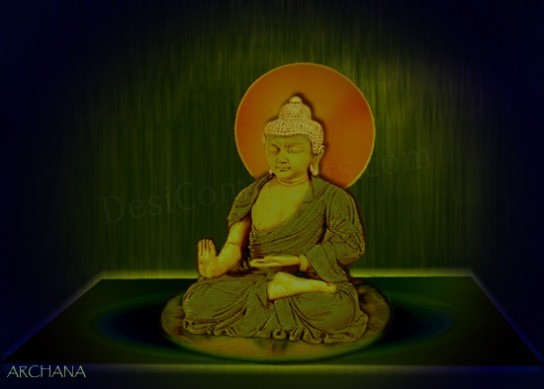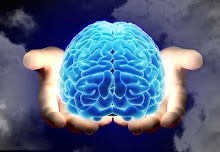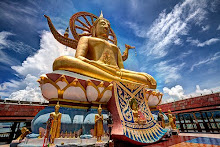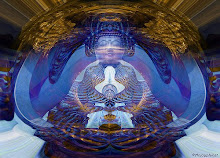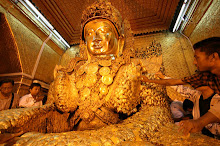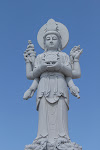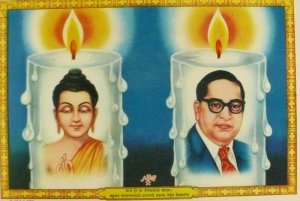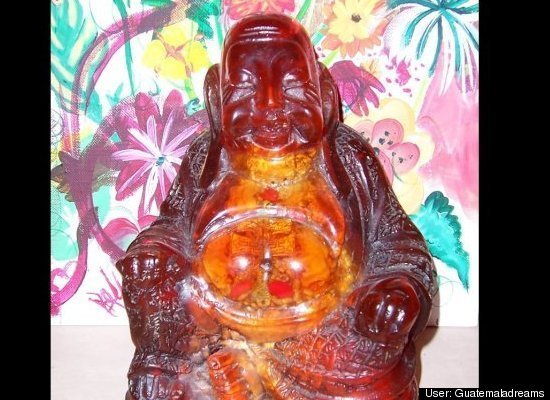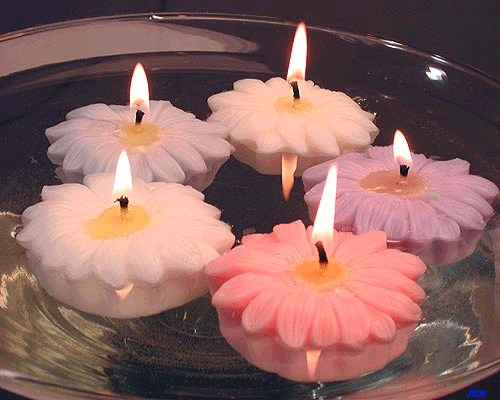2504 Wed 17 Jan 2018 LESSON http://www.tipitaka.org/eot#27 9 WHAT IS ABHIDHAMMA PIṬAKA? 10 ABHIDHAMMA PIṬAKA 6. Yamaka Pāḷi 7. Paṭṭhāna Pāḷi
6. Yamaka Pāḷi
https://www.youtube.com/watch?v=f_gBe7rO60I
Theravada Buddhist. “Pali with English Translation” Chanting.
Thai Forest Temple
Published on Apr 23, 2011
Created By Acariya Vassa.
Category
Nonprofits & Activism
https://epalitipitaka.appspot.com/canon/abhidhamma/yamaka
中文 (繁體)
Translation
English
Translation
Pāḷi Canon
The Basket of the Discipline
The Basket of Discourses
Commentaries
Sub-commentaries
https://www.youtube.com/watch?v=N8uRJWMaPnk
Pathana Pali Chant ပ႒ာန္းပါဠိေတာ္
ဖိုး ေဂၚရခါး
Published on Mar 20, 2012
Payategyi,Pathan pali chant and Metta Bhawana,Buddha Ane kazar in Myanmar by Mahar Kan Pat
Lae Sayadaw U Nanda Mitzutar
Category
Nonprofits & Activism
http://www.aimwell.org/patthana.html
Paṭṭhāna – Conditional Relations
Abhidhammapiṭake Paṭṭhānapāḷi
(1) Paccayuddeso
Summary
Hetupaccayo, ārammaṇapaccayo, adhipatipaccayo, anantarapaccayo,
samanantarapaccayo, sahajātapaccayo, aññamaññapaccayo, nissayapaccayo,
upanissayapaccayo, purejātapaccayo, pacchājātapaccayo, āsevanapaccayo,
kammapaccayo, vipākapaccayo, āhārapaccayo, indriyapaccayo, jhānapaccayo,
maggapaccayo, sampayuttapaccayo, vippayuttapaccayo, atthipaccayo,
natthipaccayo, vigatapaccayo, avigatapaccayoti.
(2) Paccayaniddeso
Exposition
1. Hetupaccayo’ti — Hetū hetusampayuttakānaṃ dhammānaṃ taṃsamuṭṭhānānañca rūpānaṃ hetupaccayena paccayo.
2. Ārammaṇapaccayo’ti — Rūpāyatanaṃ cakkhuviññāṇadhātuyā
taṃsampayuttakānañca dhammānaṃ ārammaṇapaccayena paccayo. Saddāyatanaṃ
sotaviññāṇadhātuyā taṃsampayuttakānañca dhammānaṃ ārammaṇapaccayena
paccayo. Gandhāyatanaṃ ghānaviññāṇadhātuyā taṃsampayuttakānañca
dhammānaṃ ārammaṇapaccayena paccayo. Rasāyatanaṃ jivhāviññāṇadhātuyā
taṃsampayuttakānañca dhammānaṃ ārammaṇapaccayena paccayo.
Phoṭṭhabbāyatanaṃ kāyaviññāṇadhātuyā taṃsampayuttakānañca dhammānaṃ
ārammaṇapaccayena paccayo. Rūpāyatanaṃ saddāyatanaṃ gandhāyatanaṃ
rasāyatanaṃ phoṭṭhabbāyatanaṃ manodhātuyā taṃsampayuttakānañca dhammānaṃ
ārammaṇapaccayena paccayo. Sabbe dhammā manoviññāṇadhātuyā
taṃsampayuttakānañca dhammānaṃ ārammaṇapaccayena paccayo.
Yaṃ yaṃ
dhammaṃ ārabbha ye ye dhammā uppajjanti cittacetasikā dhammā, te te
dhammā tesaṃ tesaṃ dhammānaṃ ārammaṇapaccayena paccayo.
3.
Adhipatipaccayo’ti — Chandādhipati chandasampayuttakānaṃ dhammānaṃ
taṃsamuṭṭhānānañca rūpānaṃ adhipatipaccayena paccayo. Vīriyādhipati
vīriyasampayuttakānaṃ dhammānaṃ taṃsamuṭṭhānānañca rūpānaṃ
adhipatipaccayena paccayo. Cittādhipati cittasampayuttakānaṃ dhammānaṃ
taṃsamuṭṭhānānañca rūpānaṃ adhipatipaccayena paccayo. Vīmaṃsādhipati
vīmaṃsasampayuttakānaṃ dhammānaṃ taṃsamuṭṭhānānañca rūpānaṃ
adhipatipaccayena paccayo.
Yaṃ yaṃ dhammaṃ garuṃ katvā ye ye
dhammā uppajjanti cittacetasikā dhammā, te te dhammā tesaṃ tesaṃ
dhammānaṃ adhipatipaccayena paccayo.
4. Anantarapaccayo’ti —
Cakkhuviññāṇadhātu taṃsampayuttakā ca dhammā manodhātuyā
taṃsampayuttakānañca dhammānaṃ anantarapaccayena paccayo. Manodhātu
taṃsampayuttakā ca dhammā manoviññāṇadhātuyā taṃsampayuttakānañca
dhammānaṃ anantarapaccayena paccayo.
Sotaviññāṇadhātu
taṃsampayuttakā ca dhammā manodhātuyā taṃsampayuttakānañca dhammānaṃ
anantarapaccayena paccayo. Manodhātu taṃsampayuttakā ca dhammā
manoviññāṇadhātuyā taṃsampayuttakānañca dhammānaṃ anantarapaccayena
paccayo.
Ghānaviññāṇadhātu taṃsampayuttakā ca dhammā manodhātuyā
taṃsampayuttakānañca dhammānaṃ anantarapaccayena paccayo. Manodhātu
taṃsampayuttakā ca dhammā manoviññāṇadhātuyā taṃsampayuttakānañca
dhammānaṃ anantarapaccayena paccayo.
Jivhāviññāṇadhātu
taṃsampayuttakā ca dhammā manodhātuyā taṃsampayuttakānañca dhammānaṃ
anantarapaccayena paccayo. Manodhātu taṃsampayuttakā ca dhammā
manoviññāṇadhātuyā taṃsampayuttakānañca dhammānaṃ anantarapaccayena
paccayo.
Kāyaviññāṇadhātu taṃsampayuttakā ca dhammā manodhātuyā
taṃsampayuttakānañca dhammānaṃ anantarapaccayena paccayo. Manodhātu
taṃsampayuttakā ca dhammā manoviññāṇadhātuyā taṃsampayuttakānañca
dhammānaṃ anantarapaccayena paccayo.
Purimā purimā kusalā dhammā
pacchimānaṃ pacchimānaṃ kusalānaṃ dhammānaṃ anantarapaccayena paccayo.
Purimā purimā kusalā dhammā pacchimānaṃ pacchimānaṃ abyākatānaṃ
dhammānaṃ anantarapaccayena paccayo.
Purimā purimā akusalā dhammā
pacchimānaṃ pacchimānaṃ akusalānaṃ dhammānaṃ anantarapaccayena paccayo.
Purimā purimā akusalā dhammā pacchimānaṃ pacchimānaṃ abyākatānaṃ
dhammānaṃ anantarapaccayena paccayo.
Purimā purimā abyākatā
dhammā pacchimānaṃ pacchimānaṃ abyākatānaṃ dhammānaṃ anantarapaccayena
paccayo. Purimā purimā abyākatā dhammā pacchimānaṃ pacchimānaṃ kusalānaṃ
dhammānaṃ anantarapaccayena paccayo. Purimā purimā abyākatā dhammā
pacchimānaṃ pacchimānaṃ akusalānaṃ dhammānaṃ anantarapaccayena paccayo.
Yesaṃ yesaṃ dhammānaṃ anantarā ye ye dhammā uppajjanti cittacetasikā
dhammā, te te dhammā tesaṃ tesaṃ dhammānaṃ anantarapaccayena paccayo.
5. Samanantarapaccayo’ti — Cakkhuviññāṇadhātu taṃsampayuttakā ca dhammā
manodhātuyā taṃsampayuttakānañca dhammānaṃ samanantarapaccayena
paccayo. Manodhātu taṃsampayuttakā ca dhammā manoviññāṇadhātuyā
taṃsampayuttakānañca dhammānaṃ samanantarapaccayena paccayo.
Sotaviññāṇadhātu taṃsampayuttakā ca dhammā manodhātuyā
taṃsampayuttakānañca dhammānaṃ samanantarapaccayena paccayo. Manodhātu
taṃsampayuttakā ca dhammā manoviññāṇadhātuyā taṃsampayuttakānañca
dhammānaṃ samanantarapaccayena paccayo.
Ghāṇaviññāṇadhātu
taṃsampayuttakā ca dhammā manodhātuyā taṃsampayuttakānañca dhammānaṃ
samanantarapaccayena paccayo. Manodhātu taṃsampayuttakā ca dhammā
manoviññāṇadhātuyā taṃsampayuttakānañca dhammānaṃ samanantarapaccayena
paccayo.
Jivhāviññāṇadhātu taṃsampayuttakā ca dhammā manodhātuyā
taṃsampayuttakānañca dhammānaṃ samanantarapaccayena paccayo. Manodhātu
taṃsampayuttakā ca dhammā manoviññāṇadhātuyā taṃsampayuttakānañca
dhammānaṃ samanantarapaccayena paccayo.
Kāyaviññāṇadhātu
taṃsampayuttakā ca dhammā manodhātuyā taṃsampayuttakānañca dhammānaṃ
samanantarapaccayena paccayo. Manodhātu taṃsampayuttakā ca dhammā
manoviññāṇadhātuyā taṃsampayuttakānañca dhammānaṃ samanantarapaccayena
paccayo.
Purimā purimā kusalā dhammā pacchimānaṃ pacchimānaṃ
kusalānaṃ dhammānaṃ samanantarapaccayena paccayo. Purimā purimā kusalā
dhammā pacchimānaṃ pacchimānaṃ abyākatānaṃ dhammānaṃ
samanantarapaccayena paccayo.
Purimā purimā akusalā dhammā
pacchimānaṃ pacchimānaṃ akusalānaṃ dhammānaṃ samanantarapaccayena
paccayo. Purimā purimā akusalā dhammā pacchimānaṃ pacchimānaṃ
abyākatānaṃ dhammānaṃ samanantarapaccayena paccayo.
Purimā purimā
abyākatā dhammā pacchimānaṃ pacchimānaṃ abyākatānaṃ dhammānaṃ
samanantarapaccayena paccayo. Purimā purimā abyākatā dhammā pacchimānaṃ
pacchimānaṃ kusalānaṃ dhammānaṃ samanantarapaccayena paccayo. Purimā
purimā abyākatā dhammā pacchimānaṃ pacchimānaṃ akusalānaṃ dhammānaṃ
samanantarapaccayena paccayo.
Yesaṃ yesaṃ dhammānaṃ samanantarā
ye ye dhammā uppajjanti cittacetasikā dhammā, te te dhammā tesaṃ tesaṃ
dhammānaṃ samanantarapaccayena paccayo.
6. Sahajātapaccayo’ti —
Cattāro khandhā arūpino aññamaññaṃ sahajātapaccayena paccayo. Cattāro
mahābhūtā aññamaññaṃ sahajātapaccayena paccayo. Okkantikkhaṇe nāmarūpaṃ
aññamaññaṃ sahajātapaccayena paccayo. Cittacetasikā dhammā
cittasamuṭṭhānānaṃ rūpānaṃ sahajātapaccayena paccayo. Mahābhūtā
upādārūpānaṃ sahajātapaccayena paccayo. Rūpino dhammā arūpīnaṃ dhammānaṃ
kiñci kāle sahajātapaccayena paccayo, kiñci kāle na sahajātapaccayena
paccayo.
7. Aññamaññapaccayo’ti — Cattāro khandhā arūpino
aññamaññapaccayena paccayo. Cattāro mahābhūtā aññamaññapaccayena
paccayo. Okkantikkhaṇe nāmarūpaṃ aññamaññapaccayena paccayo.
8.
Nissayapaccayo’ti — Cattāro khandhā arūpino aññamaññaṃ nissayapaccayena
paccayo. Cattāro mahābhūtā aññamaññaṃ nissayapaccayena paccayo.
Okkantikkhaṇe nāmarūpaṃ aññamaññaṃ nissayapaccayena paccayo.
Cittacetasikā dhammā cittasamuṭṭhānānaṃ rūpānaṃ nissayapaccayena
paccayo. Mahābhūtā upādārūpānaṃ nissayapaccayena paccayo.
Cakkhāyatanaṃ cakkhuviññāṇadhātuyā taṃsampayuttakānañca dhammānaṃ
nissayapaccayena paccayo. Sotāyatanaṃ sotaviññāṇadhātuyā
taṃsampayuttakānañca dhammānaṃ nissayapaccayena paccayo. Ghānāyatanaṃ
ghānaviññāṇadhātuyā taṃsampayuttakānañca dhammānaṃ nissayapaccayena
paccayo. Jivhāyatanaṃ jivhāviññāṇadhātuyā taṃsampayuttakānañca dhammānaṃ
nissayapaccayena paccayo. Kāyāyatanaṃ kāyaviññāṇadhātuyā
taṃsampayuttakānañca dhammānaṃ nissayapaccayena paccayo. Yaṃ rūpaṃ
nissāya manodhātu ca manoviññāṇadhātu ca vattanti, taṃ rūpaṃ manodhātuyā
ca manoviññāṇadhātuyā ca taṃsampayuttakānañca dhammānaṃ
nissayapaccayena paccayo.
9. Upanissayapaccayo’ti — Purimā purimā
kusalā dhammā pacchimānaṃ pacchimānaṃ kusalānaṃ dhammānaṃ
upanissayapaccayena paccayo. Purimā purimā kusalā dhammā pacchimānaṃ
pacchimānaṃ akusalānaṃ dhammānaṃ kesañci upanissayapaccayena paccayo.
Purimā purimā kusalā dhammā pacchimānaṃ pacchimānaṃ abyākatānaṃ
dhammānaṃ upanissayapaccayena paccayo.
Purimā purimā akusalā
dhammā pacchimānaṃ pacchimānaṃ akusalānaṃ dhammānaṃ upanissayapaccayena
paccayo. Purimā purimā akusalā dhammā pacchimānaṃ pacchimānaṃ kusalānaṃ
dhammānaṃ kesañci upanissayapaccayena paccayo. Purimā purimā akusalā
dhammā pacchimānaṃ pacchimānaṃ abyākatānaṃ dhammānaṃ upanissayapaccayena
paccayo.
Purimā purimā abyākatā dhammā pacchimānaṃ pacchimānaṃ
abyākatānaṃ dhammānaṃ upanissayapaccayena paccayo. Purimā purimā
abyākatā dhammā pacchimānaṃ pacchimānaṃ kusalānaṃ dhammānaṃ
upanissayapaccayena paccayo. Purimā purimā abyākatā dhammā pacchimānaṃ
pacchimānaṃ akusalānaṃ dhammānaṃ upanissayapaccayena paccayo.
Utubhojanampi upanissayapaccayena paccayo. Puggalopi upanissayapaccayena paccayo. Senāsanampi upanissayapaccayena paccayo.
10. Purejātapaccayo’ti — cakkhāyatanaṃ cakkhuviññāṇadhātuyā
taṃsampayuttakānañca dhammānaṃ purejātapaccayena paccayo. Sotāyatanaṃ
sotaviññāṇadhātuyā taṃsampayuttakānañca dhammānaṃ purejātapaccayena
paccayo. Ghānāyatanaṃ ghānaviññāṇadhātuyā taṃsampayuttakānañca dhammānaṃ
purejātapaccayena paccayo. Jivhāyatanaṃ jivhāviññāṇadhātuyā
taṃsampayuttakānañca dhammānaṃ purejātapaccayena paccayo. Kāyāyatanaṃ
kāyaviññāṇadhātuyā taṃsampayuttakānañca dhammānaṃ purejātapaccayena
paccayo.
Rūpāyatanaṃ cakkhuviññāṇadhātuyā taṃsampayuttakānañca
dhammānaṃ purejātapaccayena paccayo. Saddāyatanaṃ sotaviññāṇadhātuyā
taṃsampayuttakānañca dhammānaṃ purejātapaccayena paccayo. Gandhāyatanaṃ
ghānaviññāṇadhātuyā taṃsampayuttakānañca dhammānaṃ purejātapaccayena
paccayo. Rasāyatanaṃ jivhāviññāṇadhātuyā taṃsampayuttakānañca dhammānaṃ
purejātapaccayena paccayo. Phoṭṭhabbāyatanaṃ kāyaviññāṇadhātuyā
taṃsampayuttakānañca dhammānaṃ purejātapaccayena paccayo. Rūpāyatanaṃ
saddāyatanaṃ gandhāyatanaṃ rasāyatanaṃ phoṭṭhabbāyatanaṃ manodhātuyā
taṃsampayuttakānañca dhammānaṃ purejātapaccayena paccayo.
Yaṃ
rūpaṃ nissāya manodhātu ca manoviññāṇadhātu ca vattanti, taṃ rūpaṃ
manodhātuyā taṃsampayuttakānañca dhammānaṃ purejātapaccayena paccayo.
Manoviññāṇadhātuyā taṃsampayuttakānañca dhammānaṃ kiñci kāle
purejātapaccayena paccayo, kiñci kāle na purejātapaccayena paccayo.
11. Pacchājātapaccayo’ti — Pacchājātā cittacetasikā dhammā purejātassa imassa kāyassa pacchājātapaccayena paccayo.
12. Āsevanapaccayo’ti — Purimā purimā kusalā dhammā pacchimānaṃ
pacchimānaṃ kusalānaṃ dhammānaṃ āsevanapaccayena paccayo. Purimā purimā
akusalā dhammā pacchimānaṃ pacchimānaṃ akusalānaṃ dhammānaṃ
āsevanapaccayena paccayo. Purimā purimā kiriyābyākatā dhammā pacchimānaṃ
pacchimānaṃ kiriyābyākatānaṃ dhammānaṃ āsevanapaccayena paccayo.
13. Kammapaccayo’ti — Kusalākusalaṃ kammaṃ vipākānaṃ khandhānaṃ kaṭattā
ca rūpānaṃ kammapaccayena paccayo. Cetanā sampayuttakānaṃ dhammānaṃ
taṃsamuṭṭhānānañca rūpānaṃ kammapaccayena paccayo.
14. Vipākapaccayo’ti — Vipākā cattāro khandhā arūpino aññamaññaṃ vipākapaccayena paccayo.
15. Āhārapaccayo’ti — Kabaḷīkāro āhāro imassa kāyassa āhārapaccayena
paccayo. Arūpino āhārā sampayuttakānaṃ dhammānaṃ taṃsamuṭṭhānānañca
rūpānaṃ āhārapaccayena paccayo.
16. Indriyapaccayo’ti —
Cakkhundriyaṃ cakkhuviññāṇadhātuyā taṃsampayuttakānañca dhammānaṃ
indriyapaccayena paccayo. Sotindriyaṃ sotaviññāṇadhātuyā
taṃsampayuttakānañca dhammānaṃ indriyapaccayena paccayo. Ghānindriyaṃ
ghānaviññāṇadhātuyā taṃsampayuttakānañca dhammānaṃ indriyapaccayena
paccayo. Jivhindriyaṃ jivhāviññāṇadhātuyā taṃsampayuttakānañca dhammānaṃ
indriyapaccayena paccayo. Kāyindriyaṃ kāyaviññāṇadhātuyā
taṃsampayuttakānañca dhammānaṃ indriyapaccayena paccayo.
Rūpajīvitindriyaṃ kaṭattārūpānaṃ indriyapaccayena paccayo.
Arūpino indriyā sampayuttakānaṃ dhammānaṃ taṃsamuṭṭhānānañca rūpānaṃ indriyapaccayena paccayo.
17. Jhānapaccayo’ti — Jhānaṅgāni jhānasampayuttakānaṃ dhammānaṃ taṃsamuṭṭhānānañca rūpānaṃ jhānapaccayena paccayo.
18. Maggapaccayo’ti — Maggaṅgāni maggasampayuttakānaṃ dhammānaṃ taṃsamuṭṭhānānañca rūpānaṃ maggapaccayena paccayo.
19. Sampayuttapaccayo’ti — Cattāro khandhā arūpino aññamaññaṃ sampayuttapaccayena paccayo.
20. Vippayuttapaccayo’ti — Rūpino dhammā arūpīnaṃ dhammānaṃ
vippayuttapaccayena paccayo. Arūpino dhammā rūpīnaṃ dhammānaṃ
vippayuttapaccayena paccayo.
21. Atthipaccayo’ti — Cattāro
khandhā arūpino aññamaññaṃ atthipaccayena paccayo. Cattāro mahābhūtā
aññamaññaṃ atthipaccayena paccayo. Okkantikkhaṇe nāmarūpaṃ aññamaññaṃ
atthipaccayena paccayo. Cittacetasikā dhammā cittasamuṭṭhānānaṃ rūpānaṃ
atthipaccayena paccayo. Mahābhūtā upādārūpānaṃ atthipaccayena paccayo.
Cakkhāyatanaṃ cakkhuviññāṇadhātuyā taṃsampayuttakānañca dhammānaṃ
atthipaccayena paccayo. Sotāyatanaṃ sotaviññāṇadhātuyā
taṃsampayuttakānañca dhammānaṃ atthipaccayena paccayo. Ghānāyatanaṃ
ghānaviññāṇadhātuyā taṃsampayuttakānañca dhammānaṃ atthipaccayena
paccayo. Jivhāyatanaṃ jivhāviññāṇadhātuyā taṃsampayuttakānañca dhammānaṃ
atthipaccayena paccayo. Kāyāyatanaṃ kāyaviññāṇadhātuyā
taṃsampayuttakānañca dhammānaṃ atthipaccayena paccayo.
Rūpāyatanaṃ cakkhuviññāṇadhātuyā taṃsampayuttakānañca dhammānaṃ
atthipaccayena paccayo. Saddāyatanaṃ sotaviññāṇadhātuyā
taṃsampayuttakānañca dhammānaṃ atthipaccayena paccayo. Gandhāyatanaṃ
ghānaviññāṇadhātuyā taṃsampayuttakānañca dhammānaṃ atthipaccayena
paccayo. Rasāyatanaṃ jivhāviññāṇadhātuyā taṃsampayuttakānañca dhammānaṃ
atthipaccayena paccayo. Phoṭṭhabbāyatanaṃ kāyaviññāṇadhātuyā
taṃsampayuttakānañca dhammānaṃ atthipaccayena paccayo. Rūpāyatanaṃ
saddāyatanaṃ gandhāyatanaṃ rasāyatanaṃ phoṭṭhabbāyatanaṃ manodhātuyā
taṃsampayuttakānañca dhammānaṃ atthipaccayena paccayo.
Yaṃ rūpaṃ
nissāya manodhātu ca manoviññāṇadhātu ca vattanti, taṃ rūpaṃ manodhātuyā
ca manoviññāṇadhātuyā ca taṃsampayuttakānañca dhammānaṃ atthipaccayena
paccayo.
22. Natthipaccayo’ti — Samanantaraniruddhā cittacetasikā
dhammā paṭuppannānaṃ cittacetasikānaṃ dhammānaṃ natthipaccayena
paccayo.
23. Vigatapaccayo’ti — Samanantaravigatā cittacetasikā dhammā paṭuppannānaṃ cittacetasikānaṃ dhammānaṃ vigatapaccayena paccayo.
24. Avigatapaccayo’ti — Cattāro khandhā arūpino aññamaññaṃ
avigatapaccayena paccayo. Cattāro mahābhūtā aññamaññaṃ avigatapaccayena
paccayo. Okkantikkhaṇe nāmarūpaṃ aññamaññaṃ avigatapaccayena paccayo.
Cittacetasikā dhammā cittasamuṭṭhānānaṃ rūpānaṃ avigatapaccayena
paccayo. Mahābhūtā upādārūpānaṃ avigatapaccayena paccayo.
Cakkhāyatanaṃ cakkhuviññāṇadhātuyā taṃsampayuttakānañca dhammānaṃ
avigatapaccayena paccayo. Sotāyatanaṃ sotaviññāṇadhātuyā
taṃsampayuttakānañca dhammānaṃ avigatapaccayena paccayo. Ghānāyatanaṃ
ghānaviññāṇadhātuyā taṃsampayuttakānañca dhammānaṃ avigatapaccayena
paccayo. Jivhāyatanaṃ jivhāviññāṇadhātuyā taṃsampayuttakānañca dhammānaṃ
avigatapaccayena paccayo. Kāyāyatanaṃ kāyaviññāṇadhātuyā
taṃsampayuttakānañca dhammānaṃ avigatapaccayena paccayo.
Rūpāyatanaṃ cakkhuviññāṇadhātuyā taṃsampayuttakānañca dhammānaṃ
avigatapaccayena paccayo. Saddāyatanaṃ sotaviññāṇadhātuyā
taṃsampayuttakānañca dhammānaṃ avigatapaccayena paccayo. Gandhāyatanaṃ
ghānaviññāṇadhātuyā taṃsampayuttakānañca dhammānaṃ avigatapaccayena
paccayo. Rasāyatanaṃ jivhāviññāṇadhātuyā taṃsampayuttakānañca dhammānaṃ
avigatapaccayena paccayo. Phoṭṭhabbāyatanaṃ kāyaviññāṇadhātuyā
taṃsampayuttakānañca dhammānaṃ avigatapaccayena paccayo. Rūpāyatanaṃ
saddāyatanaṃ gandhāyatanaṃ rasāyatanaṃ phoṭṭhabbāyatanaṃ manodhātuyā
taṃsampayuttakānañca dhammānaṃ avigatapaccayena paccayo.
Yaṃ
rūpaṃ nissāya manodhātu ca manoviññāṇadhātu ca vattanti, taṃ rūpaṃ
manodhātuyā ca manoviññāṇadhātuyā ca taṃsampayuttakānañca dhammānaṃ
avigatapaccayena paccayo.
Paccayaniddeso
(1) Summary of Conditional Relations
Root condition, object condition, predominance condition, proximity
condition, contiguity condition, co-nascence condition, mutuality
condition, dependence condition, strong dependence condition,
pre-nascence condition, post-nascence condition, repetition condition,
kamma condition, resultant condition, nutriment condition, faculty
condition, jhāna condition, path condition, association condition,
dissociation condition, presence condition, absence condition,
disappearance condition, non-disappearance condition.
(2) Exposition of Conditional Relations
1. “Root condition” means — The roots ¹ are related to the phenomena
that are associated with roots, and the materiality produced thereby, by
root condition.
2. “Object condition” means — The sight-faculty
is related to eye-consciousness element and its associated phenomena by
object condition. The sound-faculty is related to auditory-consciousness
element and its associated phenomena by object condition. The
odour-faculty is related to olfactory-consciousness element and its
associated phenomena by object condition. The taste-faculty is related
to gustatory-consciousness and its associated phenomena by object
condition. The tangible-object-faculty is related to
tactile-consciousness and its associated phenomena by object condition.
The sight-faculty, sound-faculty, odour-faculty, taste-faculty, and
tangible-object-faculty are related to mind element and its associated
phenomena by object condition. All phenomena are related to
mind-consciousness element and its associated phenomena by object
condition.
Taking any phenomena as object, these phenomena,
consciousness, and mental states ² arise; those (former) phenomena are
related to those (latter) phenomena by object condition.
3.
“Predominance condition” means — Predominant will is related to the
phenomena associated with will, and the matter produced thereby, by
predominance condition. Predominant effort is related to the phenomena
associated with effort, and the matter produced thereby, by predominance
condition. Predominant thought is related to the phenomena associated
with thought, and the matter produced thereby, by predominance
condition. Predominant investigation is related to the phenomena
associated with investigation,³ and the matter produced thereby, by
predominance condition.
Taking any phenomena as estimable
(intense) object, these phenomena, consciousness, and mental states
arise; those (former) phenomena are related to those (latter) phenomena
by predominance condition.
4. “Proximity condition” means — The
eye-consciousness element and its associated phenomena are related to
mind element and its associated phenomena by proximity condition.
Mind-element and its associated phenomena are related to mind element
and its associated phenomena by proximity condition.
Auditory-consciousness element and its associated phenomena are related
to mind element and its associated phenomena by proximity condition.
Mind-element and its associated phenomena are related to mind element
and its associated phenomena by proximity condition.
Olfactory-consciousness element and its associated phenomena are related
to mind element and its associated phenomena by proximity condition.
Mind-element and its associated phenomena are related to mind element
and its associated phenomena by proximity condition.
Gustatory-consciousness element and its associated phenomena are related
to mind element and its associated phenomena by proximity condition.
Mind-element and its associated phenomena are related to mind element
and its associated phenomena by proximity condition.
Tactile-consciousness element and its associated phenomena are related
to mind element and its associated phenomena by proximity condition.
Mind-element and its associated phenomena are related to mind element
and its associated phenomena by proximity condition.
Preceding
wholesome phenomena are related to subsequent wholesome phenomena by
proximity condition. Preceding wholesome phenomena are related to
subsequent indeterminate phenomena by proximity condition.
Preceding unwholesome phenomena are related to subsequent unwholesome
phenomena by proximity condition. Preceding unwholesome phenomena are
related to subsequent indeterminate phenomena by proximity condition.
Preceding indeterminate phenomena are related to subsequent
indeterminate phenomena by proximity condition. Preceding indeterminate
phenomena are related to subsequent wholesome phenomena by proximity
condition. Preceding indeterminate phenomena are related to subsequent
unwholesome phenomena by proximity condition.
In proximity to
these phenomena, the (other) phenomena, consciousness, and mental states
arise; those (former) phenomena are related to those (latter) phenomena
by proximity condition.
5. “Contiguity condition” means —
Eye-consciousness element and its associated phenomena are related to
mind element and its associated phenomena by contiguity condition.
Mind-element and its associated phenomena are related to mind element
and its associated phenomena by contiguity condition.
Auditory-consciousness element and its associated phenomena are related
to mind element and its associated phenomena by contiguity condition.
Mind-element and its associated phenomena are related to mind element
and its associated phenomena by contiguity condition.
Olfactory-consciousness element and its associated phenomena are related
to mind element and its associated phenomena by contiguity condition.
Mind-element and its associated phenomena are related to mind element
and its associated phenomena by contiguity condition.
Gustatory-consciousness element and its associated phenomena are related
to mind element and its associated phenomena by contiguity condition.
Mind-element and its associated phenomena are related to mind element
and its associated phenomena by contiguity condition.
Tactile-consciousness element and its associated phenomena are related
to mind element and its associated phenomena by contiguity condition.
Mind-element and its associated phenomena are related to mind element
and its associated phenomena by contiguity condition.
Preceding
wholesome phenomena are related to subsequent wholesome phenomena by
contiguity condition. Preceding wholesome phenomena are related to
subsequent indeterminate phenomena by contiguity condition.
Preceding unwholesome phenomena are related to subsequent unwholesome
phenomena by contiguity condition. Preceding unwholesome phenomena are
related to subsequent indeterminate phenomena by proximity condition.
Preceding indeterminate phenomena are related to subsequent
indeterminate phenomena by contiguity condition. Preceding indeterminate
phenomena are related to subsequent wholesome phenomena by contiguity
condition. Preceding indeterminate phenomena are related to subsequent
unwholesome phenomena by contiguity condition.
In contiguity to
these phenomena, the (other) phenomena, consciousness, and mental states
arise; those (former) phenomena are related to those (latter) phenomena
by contiguity condition.
6. “Co-nascence condition” means — The
four mental aggregates are mutually related to one another by
co-nascence condition. The four great primaries are mutually related to
one another by co-nascence condition. At the moment of conception,
mentality and materiality are mutually related to one another by
co-nascence condition. phenomena, consciousness, and mental states are
mutually related to one another by co-nascence condition. The great
primaries are related to derived materiality by co-nascence condition.
The material phenomena are sometimes related to the immaterial phenomena
by co-nascence condition, and are sometimes not related by co-nascence
condition.
7. “Mutuality condition” means — The four mental
aggregates are mutually related to one another by mutuality condition.
The four great primaries are mutually related to one another by
mutuality condition. At the moment of conception mentality and
materiality are mutually related to one another by mutuality condition.
8. “Dependence condition” means — The four mental aggregates are
mutually related to one another by dependence condition. The four great
primaries are mutually related to one another by dependence condition.
At the moment of conception mentality and materiality are mutually
related to one another by dependence condition. phenomena,
consciousness, and mental states are mutually related to one another by
dependence condition. The great primaries are related to derived
materiality by dependence condition. Eye-faculty is related to
eye-consciousness element and its associated phenomena by dependence
condition.
9. “Strong dependence condition” means — Preceding
wholesome phenomena are related to subsequent wholesome phenomena by
strong dependence condition. Preceding wholesome phenomena are related
to some subsequent unwholesome phenomena by strong dependence condition.
Preceding wholesome phenomena are related to subsequent indeterminate
phenomena by strong dependence condition.
Preceding unwholesome
phenomena are related to subsequent unwholesome phenomena by strong
dependence condition. Preceding unwholesome phenomena are related to
some subsequent wholesome phenomena by strong dependence condition.
Preceding unwholesome phenomena are related to subsequent indeterminate
phenomena by proximity condition.
Preceding indeterminate
phenomena are related to subsequent indeterminate phenomena by strong
dependence condition. Preceding indeterminate phenomena are related to
subsequent wholesome phenomena by strong dependence condition. Preceding
indeterminate phenomena are related to subsequent unwholesome phenomena
by strong dependence condition.
Also, climate and food are
related by strong dependence condition. A person is related by strong
dependence condition. A dwelling place is related by strong dependence
condition.
10. “Pre-nascence condition” means — Eye-faculty is
related to eye-consciousness element and its associated phenomena by
pre-nascence condition. Ear-faculty is related to auditory-consciousness
element and its associated phenomena by pre-nascence condition.
Nose-faculty is related to olfactory-consciousness element and its
associated phenomena by pre-nascence condition. Tongue-faculty is
related to gustatory-consciousness element and its associated phenomena
by pre-nascence condition. Body-faculty is related to
tactile-consciousness element and its associated phenomena by
pre-nascence condition.
Sight-faculty is related to
eye-consciousness element and its associated phenomena by pre-nascence
condition. Sound-faculty is related to auditory-consciousness element
and its associated phenomena by pre-nascence condition. Odour-faculty is
related to olfactory-consciousness element and its associated phenomena
by pre-nascence condition. Tongue-faculty is related to
taste-consciousness element and its associated phenomena by pre-nascence
condition. Tangible object-faculty is related to tactile-consciousness
element and its associated phenomena by pre-nascence condition.
Sight-faculty, sound-faculty, odour-faculty, taste-faculty, tangible
object-faculty are related to mind-element by pre-nascence condition.
Depending on this matter, mind-element and mind-consciousness element
arise; that matter is related to mind-element and its associated
phenomena by pre-nascence condition. It is sometimes related to
mind-consciousness element and its associated phenomena by pre-nascence
condition. It is sometimes not related by pre-nascence condition.
11. “Post-nascence condition” means — The phenomena, post-nascence
consciousness and mental states are related to the pre-nascent body by
post-nascence condition.
12. “Repetition condition” means —
Preceding wholesome phenomena are related to subsequent wholesome
phenomena by repetition condition. Preceding unwholesome phenomena are
related to subsequent unwholesome phenomena by repetition condition.
Preceding functional indeterminate phenomena are related to subsequent
functional indeterminate phenomena by repetition condition.
13.
“Kamma condition” means — wholesome and unwholesome kamma are related to
resultant aggregates and kamma-produced materiality by kamma condition.
Volition is related to its associated phenomena, and the materiality
produced thereby, by kamma condition.
14. “Resultant condition” means — The four mental aggregates are mutually related to one another by resultant condition.
15. “Nutriment condition” means — Edible food is related to this body
by nutriment condition. The mental nutriments are related to their
associated phenomena and the materiality produced thereby by nutriment
condition.
16. “Faculty condition” means — The eye-faculty is
related to eye-consciousness element and its associated phenomena by
faculty condition. The ear-faculty is related to auditory-consciousness
element and its associated phenomena by faculty condition. The
nose-faculty is related to olfactory-consciousness element and its
associated phenomena by faculty condition. The tongue-faculty is related
to gustatory-consciousness element and its associated phenomena by
faculty condition. The body-faculty is related to tactile-consciousness
element and its associated phenomena by faculty condition. Physical life
faculty is related to kamma produced materiality by faculty condition.
The mental faculties are related to their associated phenomena and the
matter produced thereby by faculty condition.
17. “Jhāna
condition” means — The jhāna states are related to their associated
phenomena, and the materiality produced thereby, by jhāna condition.
18. “Path condition” means — The path states are related to their
associated phenomena, and the materiality produced thereby, by path
condition.
19. “Association condition” means — The four mental aggregates are mutually related to one another by association condition.
20. “Dissociation condition” means — The material phenomena are related
to the mental phenomena by dissociation condition. The mental phenomena
are related to the material phenomena by dissociation condition.
21. “Presence condition” means — The four mental aggregates are
mutually related to one another by presence condition. The four great
primaries are mutually related to one another by presence condition. At
the moment of conception, mentality and materiality are mutually related
to one another by presence condition. phenomena, consciousness, and
mental states are related to mind-produced materiality by presence
condition. The great primaries are related to derived materiality by
presence condition.
The eye-faculty is related to
eye-consciousness element and its associated phenomena by presence
condition. The ear-faculty is related to auditory-consciousness element
and its associated phenomena by presence condition. The nose-faculty is
related to olfactory-consciousness element and its associated phenomena
by presence condition. The tongue-faculty is related to
gustatory-consciousness element and its associated phenomena by presence
condition. The body-faculty is related to tactile-consciousness element
and its associated phenomena by presence condition.
The
sight-faculty is related to eye-consciousness element and its associated
phenomena by presence condition. Sound-faculty is related to
auditory-consciousness element and its associated phenomena by presence
condition. Odour-faculty is related to olfactory-consciousness element
and its associated phenomena by presence condition. Taste-faculty is
related to gustatory-consciousness element and its associated phenomena
by presence condition. Tangible object-faculty is related to
tactile-consciousness element and its associated phenomena by presence
condition.
Sight-faculty, sound-faculty, odour-faculty,
taste-faculty, and tangible object-faculty are related to mind element
and its associated phenomena by presence condition.
Depending on
this materiality, mind-element and mind-consciousness element arise;
that materiality is related to mind-element and mind-consciousness
element by presence condition.
22. “Absence condition” means —
Phenomena, consciousness, and mental states that have just ceased in
contiguity, are related to the present phenomena, consciousness, and
mental states by absence condition.
23. “Disappearance condition”
means — Phenomena, consciousness, and mental states that have just
disappeared in contiguity, are related to the present phenomena,
consciousness, and mental states by disappearance condition.
24.
“Non-disappearance condition” means — The four mental aggregates are
mutually related to one another by non-disappearance condition. The four
great primaries are mutually related to one another by
non-disappearance condition. At the moment of conception, mentality and
materiality are mutually related to one another by non-disappearance
condition. phenomena, consciousness, and mental states are related to
mind-produced materiality by non-disappearance condition. The great
primaries are related to derived materiality by non-disappearance
condition.
The eye-faculty is related to eye-consciousness
element and its associated phenomena by non-disappearance condition.
Ear-faculty is related to auditory-consciousness element and its
associated phenomena by non-disappearance condition. Nose-faculty is
related to olfactory-consciousness element and its associated phenomena
by non-disappearance condition. Tongue-faculty is related to
gustatory-consciousness element and its associated phenomena by
non-disappearance condition. Body-faculty is related to
tactile-consciousness element and its associated phenomena by
non-disappearance condition.
The sight-faculty is related to
eye-consciousness element and its associated phenomena by
non-disappearance condition. Sound-faculty is related to
auditory-consciousness element and its associated phenomena by
non-disappearance condition. Odour-faculty is related to
olfactory-consciousness element and its associated phenomena by
non-disappearance condition. Taste-faculty is related to
gustatory-consciousness element and its associated phenomena by
non-disappearance condition. Tangible object-faculty is related to
tactile-consciousness element and its associated phenomena by
non-disappearance condition. The sight-faculty, sound-faculty,
odour-faculty, taste-faculty, and tangible object-faculty are related to
mind element and its associated phenomena by non-disappearance
condition.
Depending on this materiality, mind-element and
mind-consciousness element arise; that materiality is related to
mind-element and mind-consciousness element by non-disappearance
condition.
Notes:
1. Greed (lobha), ill-will (dosa), delusion (moha), generosity (alobha), loving-kindness (adosa), and wisdom (amoha).
2. Phenomena (dhammā), consciousness (citta), and mental states (cetasikā).
3. These are the four bases of success: will (chanda), effort (vīriya),
thought (citta), and investigation (vīmaṃsā). Here, chanda is not the
unwholesome mental state of desire, but the wholesome mental state of
ambition or will to succeed. Vīriya is strenuous effort and
determination to achieve results. Citta is not “consciousness” as it is
translated elsewhere, but the one-pointed mental focus to gain
realisation. Vīmaṃsa is the wisdom that investigates phenomena to
understand their true nature.
You may print any of these books for your own use. However, all rights
are reserved. You may not use any of the site content on your own
website, nor for commercial distribution. To publish the books,
permission must be sought from the appropriate copyright owners. If you
post an extract on a for…
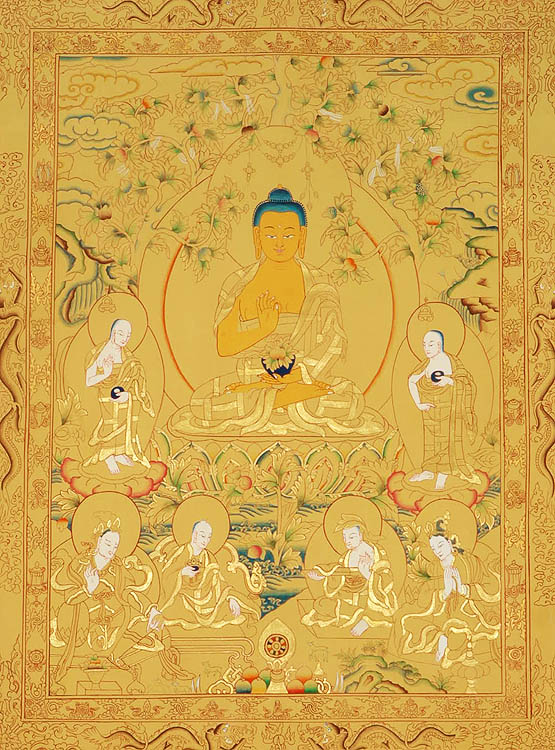 |
|
|
|
|
||||||||||
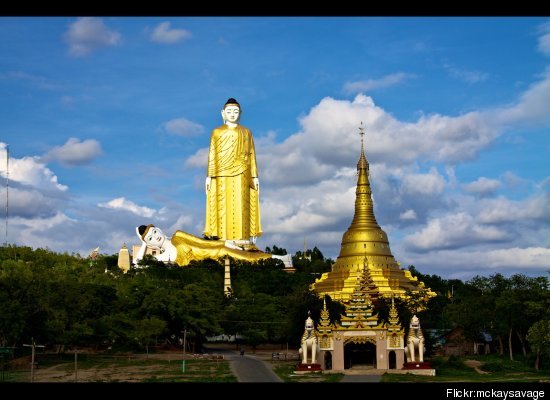


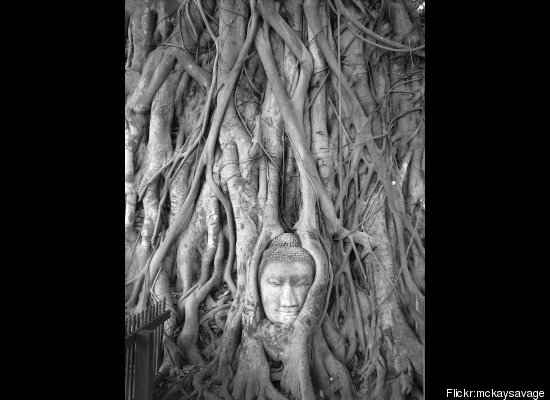

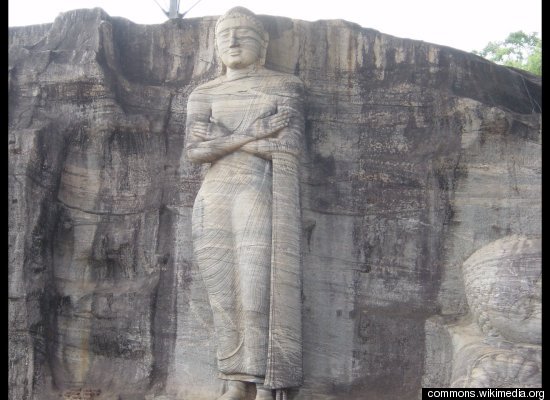
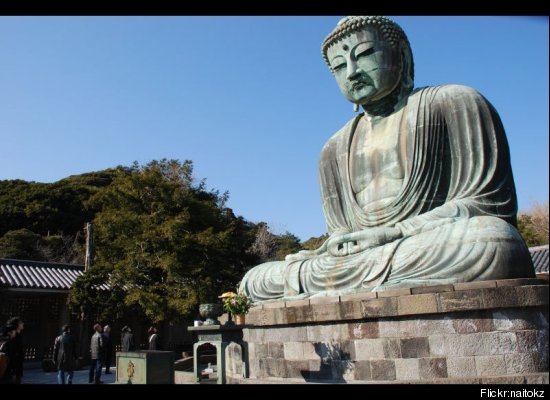


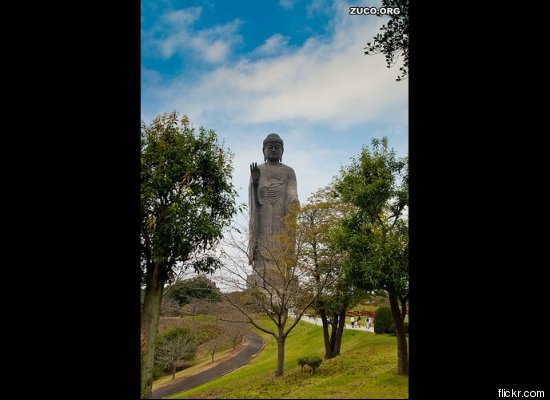

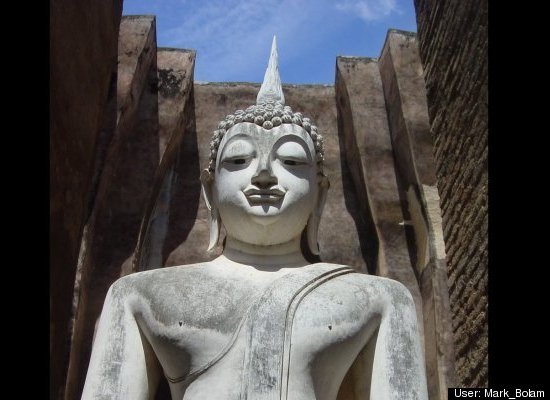

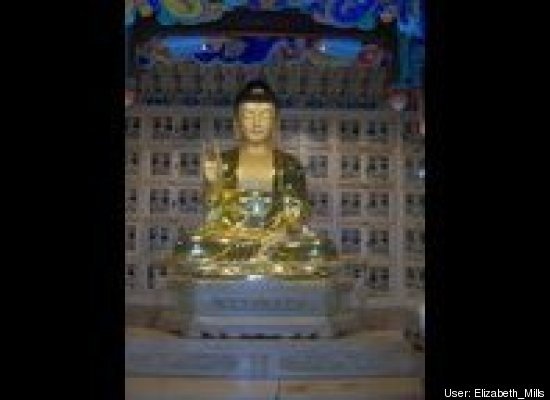
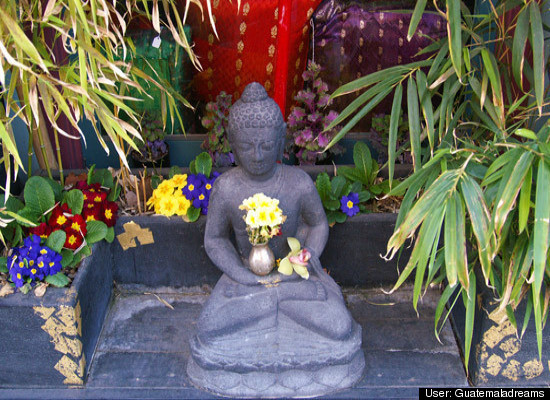
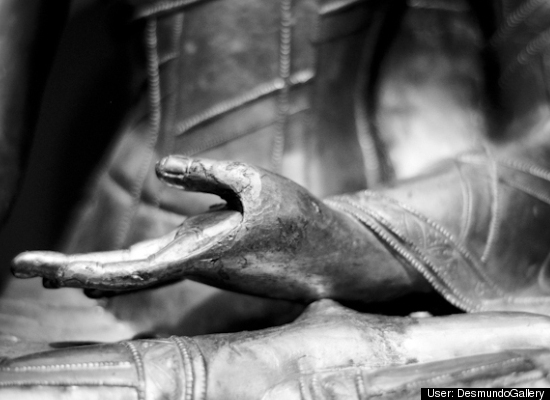
|
|||||||||||||||||||||||||||||||||||||||||||||||||||||||||||||||||||||||||||||||||||||||||||||
|
|||||||||||||||||||||||||||||||||||||||||||||||||||||||||||||||||||||||||||||||||||||||||||||
|
|
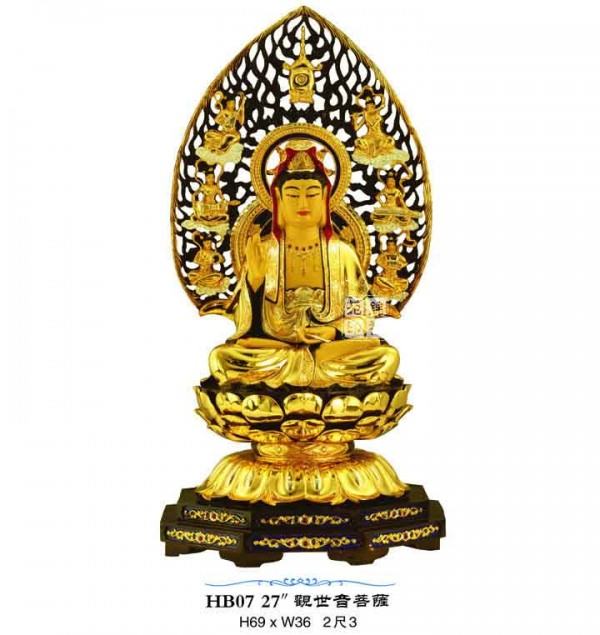



Nation is Elephant
 of BSP
of BSPwith the headline: ‘Togadia says he disappeared fearing a ‘police
encounter'’.
the e-paper, which is suppesed to be the exact replica of the print
edition, carries the modified headline: ‘Hardik backs Togadia, Cong
seeks security for VHP chief’

‘Encounter’ fear stalks even Togadia
Jan 17, 2018 00:00 IST
people” were trying to frame him in false cases and even get him killed
in a fake encounter as he recalled events a day after his mysterious
disappearance before being found unconscious.
Togadia, who is not on good terms with Prime Minister Narendra
Modi and the BJP leadership, said he had heard that a police team from
party-ruled Rajasthan had arrived in Ahmedabad on Monday to arrest him
in an old case.
“I am being targeted in a decade-old case, there is an attempt
to suppress my voice. A Rajasthan police team came to arrest me. Then
one person came to me and told me there was a plan to kill me in an
encounter,” the VHP international working president told reporters from
his hospital bed.
The allegations came in the backdrop of a turf war and an
unsuccessful attempt by a powerful lobby in the ruling establishment to
remove Togadiafrom his post.
Togadia had disappeared on Monday morning and found
unconscious in a park late in the night and admitted to hospital, his
sugar level alarmingly low. But he had recovered enough this morning to
throw some light on Monday’s events.
Togadia said after he learnt of the alleged plan to kill him,
he had contacted Rajasthan chief minister Vasundhara Raje Scindia and
home minister Gulab Chand Kataria. “They told me they were not aware
about any police team being sent to arrest him,” he said, indicating
that he panicked after this.
“When I realised the CM and home minister are denying the police
action, I switched off all my mobile phones so that my location could
not be traced. But later I got to know that they (the police) have come
with an arrest warrant,” Togadia said, tears in his eyes, as he alleged a
conspiracy by “some people” to eliminate him.
Togadia did not say who were conspiring to eliminate him but
it is widely known that the VHP leader is not on good terms with the
current BJP leadership.
Rajasthan police have acknowledged that a team had gone to
arrest Togadia but couldn’t find him at his residence. The case is
related to alleged disobedience of an order promulgated by a public
servant.
The police are still to unravel how Togadia reached the park,
about 15km from the VHP office where he stayed, but is believed to have
taken an auto-rickshaw after stepping out.
Togadia said he was not bothered about his life and would
continue to raise his voice for the rights of Hindus and that nobody
should try to suppress it.
“For years I have been raising my voice for the Hindus and for
a Ram temple, banning of cow slaughter and doubling the income of
farmers. I would urge the police not to act under political pressure. I
will abide by the law and appear in court,” he said.
Patidar leader Hardik Patel and Congress leader Arjun
Modhwadia called on Togadia on Tuesday. Both said they had visited him
in their personal capacity despite their ideological differences.
“He (Togadia) has raised issues about a threat of a fake
encounter. If a person with Z-plus security is not safe in Gujarat, then
you can imagine the condition of law and order in the state,” Modhwadia
said.
BEGINNING OF THE END OF THE DeMONetisation of Murderer of democratic institutions
(Modi)
RETRIAL By CREATING COLLEGIUM OF JUDGES WITH SC/STs/OBCS/ RELIGIOUS
MINORITIES AND WITH POOR UPPER CASTES THE GUJARAT RIOTS, FAKE ENCOUNTER
KILLINGS, SNOOP GATE SCANDAL , KG SCAM LOOT OF ONLY RS 20,000 CRORE ,
NON-MAINTENANCE OF HIS WIFE ETC ETC.,

























